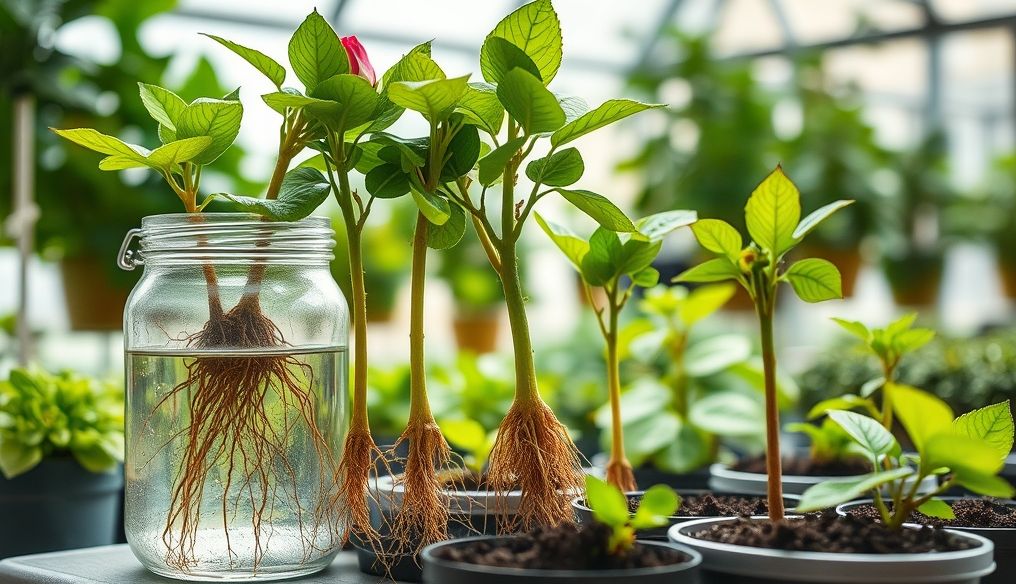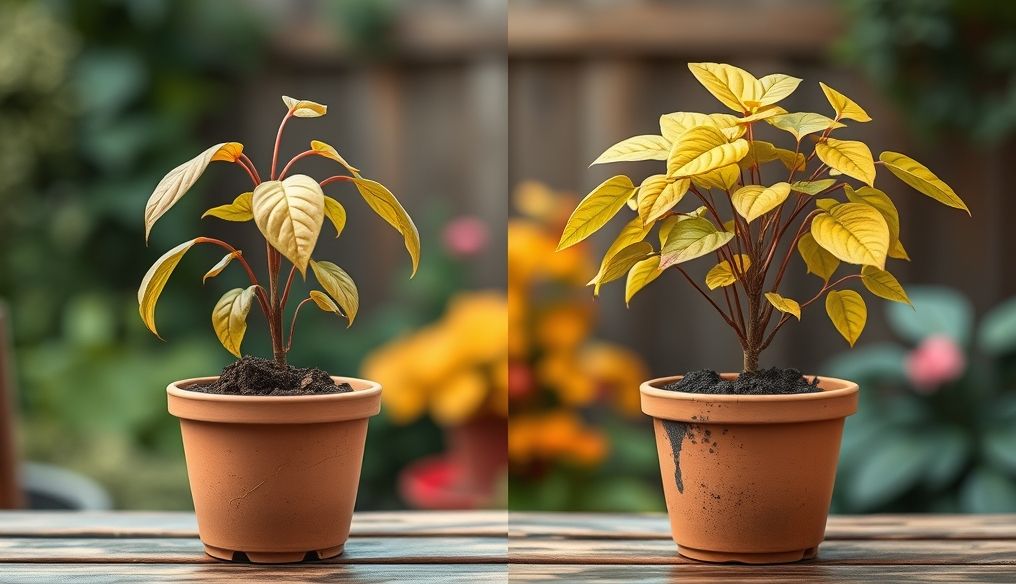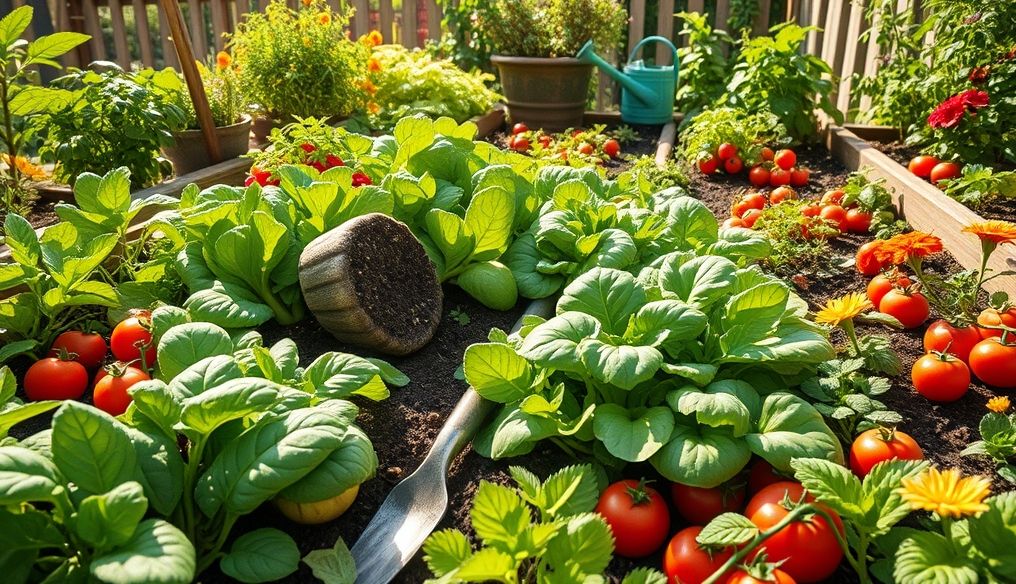Introduction to Plant Propagation from Cuttings
Plant propagation from cuttings is a common and effective technique for reproducing plants, where a part of the parent plant (the cutting) is taken and planted to produce a new plant that is genetically identical to the original. This method is often easier and faster than growing from seeds, and it allows for the preservation of the desirable traits of the parent plant.
What is a Cutting?
A cutting is a part of a plant used for propagation, typically a section of the stem, root, or leaf. The types of cuttings vary depending on the plant species and the part used:
- Stem Cuttings: The most common type, taken from the stem of the plant.
- Root Cuttings: Taken from the roots of the plant.
- Leaf Cuttings: Taken from the leaves of the plant.
Why Choose Propagation from Cuttings?
There are several reasons why propagating from cuttings is an attractive option:
- Preservation of Genetic Traits: Plants grown from cuttings are exact genetic copies of the parent plant.
- Speed: Propagation from cuttings is often faster than growing from seeds.
- Ease of Implementation: Propagating from cuttings does not require complex equipment or advanced skills.
- Increase Plant Numbers: An effective way to expand your plant collection at a low cost.
Necessary Tools and Materials
Before you begin, make sure you have the following tools and materials:
- Sharp and Clean Pruning Shears: To cut the cuttings without damaging the parent plant.
- Rooting Hormone: Helps to speed up the rooting process.
- Small Pots or Planting Containers: For planting the cuttings.
- Suitable Growing Medium: Such as peat moss or a mixture of sand and perlite.
- Water Sprayer: To keep the cuttings moist.
- Plastic Cover or Small Greenhouse: To create a humid environment for the cuttings.
Types of Stem Cuttings and How to Choose Them
Stem cuttings are one of the most common types of cuttings and are divided into several types:
- Softwood Cuttings: Taken from the new growth of the plant in spring or summer.
- Semi-Hardwood Cuttings: Taken from partially mature growth in late summer or fall.
- Hardwood Cuttings: Taken from mature growth in winter.
When choosing cuttings, look for healthy stems that are free from diseases and pests. The stems should be strong and sturdy, not brittle or damaged.
Steps for Propagating Plants from Stem Cuttings
- Prepare the Cutting: Cut a section of the stem 10-15 cm long using clean pruning shears. Make sure the cut is at an angle below a node (the point where leaves emerge).
- Remove Lower Leaves: Remove the lower leaves from the cutting, leaving 2-3 leaves at the top. This reduces moisture loss and directs the plant's energy towards rooting.
- Dip the Cutting in Rooting Hormone: Dip the bottom end of the cutting in rooting hormone, then shake off the excess.
- Plant the Cutting: Plant the cutting in the prepared growing medium, making sure to bury the bottom part that was dipped in rooting hormone.
- Water and Cover: Gently water the cutting using a water sprayer, then cover it with a plastic cover or place it in a small greenhouse to maintain humidity.
- Care for the Cutting: Place the cutting in a warm, bright location, but away from direct sunlight. Keep the growing medium moist by regularly spraying with water.
Caring for Cuttings After Planting
After planting the cuttings, it is important to monitor them regularly and provide the necessary care:
- Watering: Keep the growing medium moist, but avoid overwatering to prevent root rot.
- Ventilation: Ventilate the cuttings regularly by lifting the plastic cover for a short time each day.
- Lighting: Provide sufficient light for the cuttings, but avoid direct sunlight.
- Fertilizing: After the roots appear, you can start fertilizing the cutting with diluted fertilizers.
Tips for Successful Plant Propagation from Cuttings
- Choose the Right Time: The best time to propagate plants from cuttings is in spring or summer, when the plant is in active growth.
- Use Clean Tools: Make sure the pruning shears and other tools are clean and sterilized to prevent the spread of diseases.
- Provide Sufficient Humidity: Humidity is essential for successful rooting.
- Be Patient: Rooting may take several weeks or even months, so be patient and continue to care for the cuttings.
Examples of Plants That Can Be Propagated from Cuttings
Many plants can be successfully propagated from cuttings, including:
- Rose: One of the easiest plants to propagate from stem cuttings.
- Camellia: Requires special care, but can be propagated from semi-hardwood cuttings.
- Lavender: Best propagated from hardwood cuttings in the fall.
- Rosemary: Easy to propagate from stem cuttings.
- Grape: Best propagated from hardwood cuttings in winter.
Conclusion
Propagating plants from cuttings is a great way to expand your garden or increase your favorite plants. By following the steps and tips mentioned in this guide, you can achieve success in this process and enjoy new and healthy plants.
Important Statistics: Studies indicate that the success rate of plant propagation from cuttings can reach up to 80% if the correct procedures are followed.
Additional Tip: Use distilled water to water the cuttings to avoid salt buildup in the soil.
Interesting Fact: Some plants can root in water alone, before being transferred to soil.




